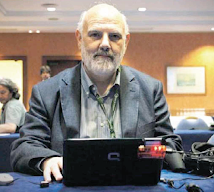
The German labour market normally follow broader economic trends only with a time lag - sometimes of as much as nine months, according to research by the Cologne-based IW economic institute. Since Germany’s recession began in the second quarter we may well only see the unemployment numbers begin to respond at the start of 2009.
Only this week both Volkswagen and Porsche have said that they plan to suspend production at their core plants in coming weeks. VW will close its factory in Wolfsburg from Dec. 18 to Jan. 11 and Porsche will halt output in Stuttgart for seven days between now and the end of January. Daimler has also reported that it is begotiating with worker representatives about cutting working hours at some of its car production plants in Germany. The company said Thursday it may scale back hours at Mercedes-Benz car manufacturing facilities in Sindelfingen, Berlin, Bremen and Duesseldorf.
Separate data from the Federal Statistical Office show that in October 2008 there were 40.84 million Germans in employment. That was up by 538,000 (+1.3%) on October 2007 and was the highest number of Germans in employment ever.
When compared with September 2008, an additional 219,000 persons were in employment in October. After eliminating seasonal variations, the number of persons in employment in Germany was 40.41 million in October 2008. Against September 2008, that was a seasonally adjusted increase of 39,000 (+0.1%).

There is a slight discrepancy between the two sets of data, since the organisations use a different methodology, and the Federal Statistics Office uses the labour force survey. Using this surbey they estimate unemployment figures according to International Labour Organization (ILO)criteria. According to their provisional estimates, the number of unemployed amounted to a seasonally adjusted 3.04 million in October 2008. Compared with October 2007, unemployment was down by a seasonally adjusted 12.6% or by 440,000 persons. The seasonally adjusted unemployment rate – which is harmonised across the EU and measured as the share of unemployed in the total labour force – amounted to 7.1% in Germany and was thus notably lower than in the same month one year earlier (8.1%).
Germany’s ILO harmonised jobless rate of 7.1 percent in September, compares with 7.9 percent in France, 4 percent in Japan and 6.1 percent in the U.S. The OECD average for September was 6 percent.












No comments:
Post a Comment